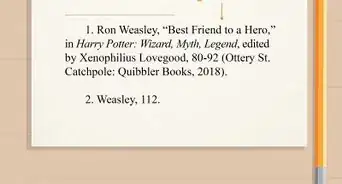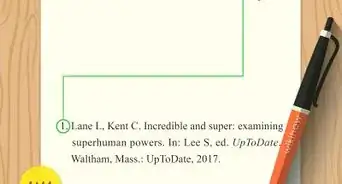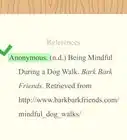This article was co-authored by wikiHow staff writer, Jennifer Mueller, JD. Jennifer Mueller is a wikiHow Content Creator. She specializes in reviewing, fact-checking, and evaluating wikiHow's content to ensure thoroughness and accuracy. Jennifer holds a JD from Indiana University Maurer School of Law in 2006.
There are 9 references cited in this article, which can be found at the bottom of the page.
This article has been viewed 13,597 times.
Learn more...
Most common citation styles, including Modern Language Association (MLA), American Psychological Association (APA), and Chicago style, favor placing in-text citations at the end of a sentence in which a source is quoted, paraphrased, or otherwise discussed. But if you mention more than one source in the same sentence, the rules change. Generally, you can put more than one source in the same citation. However, in some instances, it may make more sense for you to put 2 separate citations in the same sentence.
Steps
MLA
-
1Keep your parenthetical citation at the end of the sentence. MLA citations favor the readability of your text. Because multiple citations in the same sentence break up your text and make it more difficult to read, you'll usually use a single parenthetical citation at the end of the sentence, even if the text in the sentence draws from multiple sources. Use the last name of the author and the page number for each source, separating them with semi-colons.[1]
- For example, you might write: Although he wrote many books about his encounters with various creatures, Lockhart's actual experience with these beasts is doubtful (Potter 42; McGonagall 212).
Tip: This rule generally applies even if one source only supports part of the sentence. If your reader goes to the sources, they'll figure out which part of the sentence each source supports.
-
2List sources that all support the same fact in order of relevance. If you write a sentence in your paper and have multiple sources that support the same information, you may want to include them all. The most relevant source is typically the one that discusses the information presented the most thoroughly, although it may also be the source that established the fact first.[2]
- For example, if you had 3 sources that all supported the same information and 2 of them referenced the other one, you would put that one first, followed by the others.
- You might also decide that a source is more relevant if it's more authoritative. For example, if you had 2 sources and one was from a scholarly journal while the other was from a mainstream magazine, you would list the one in the scholarly journal first.
Advertisement -
3Choose a citation method for multiple pages that enhances readability. If you're discussing a particular issue at length, you might find that you have a source that mentions different aspects of the same issue on different pages. When this happens, you have 3 options for your in-text citations:[3]
- You can include all of the page numbers or page ranges in the parenthetical citation at the end of the sentence, separated by commas, like this: (Potter 12, 24, 48-52).
- You can provide a citation with the author's last name and the page number after the first bit of information, like this: (Potter 12). For the rest of the sentence, simply include a page number in parentheses (24) at the end of each part supported by that page or page range (48-52).
- You can mention the author's name in the text of your paper, then provide the page numbers in parentheses after the part they support.
-
4Split one sentence into two if necessary for readability. If you need more than one citation in one sentence, there's a possibility that the multiple citations will look clunky and make the text hard to read. With only 2 citations, the problem typically won't be as bad. However, if you have 3 or more sources for a single sentence, it's usually better to break it up into 2 or more sentences.[4]
- Keep in mind that if you have a source that only supports half of your sentence, typically that sentence is presenting 2 separate ideas. In that situation, it's usually better to have 2 sentences anyway.
APA
-
1Place a citation mid-sentence if it supports only part of the sentence. An APA citation includes the author's name and the year of publication. If you reference more than one source in a sentence, and one source only represents part of that sentence, place your in-text citation at the end of the material that citation supports. This may mean that you end up using more than one in-text citation in the sentence.[5]
- For example, you might write: While Lockhart's books frequently mention encounters with dangerous creatures (Snape, 2018), the professor's former students note that he was actually terrified of them (Potter, 2020).
- Including the author's name in the text of your paper can increase readability, especially for sentences with multiple in-text citations. For example, you might write: Although Snape (2018) noted that Lockhart's books discussed encounters with dangerous creatures, his former students consider those books to be works of fiction (Potter, 2020).
Tip: Mid-sentence citations are also appropriate if you add information yourself that doesn't appear in the cited source.
-
2Order sources in the same parenthetical citation alphabetically. If you have more than one source that supports the information you've included in a sentence, list them all in a single parenthetical, separated by semi-colons. Place them alphabetically in the order they appear on your Reference List so your readers can easily find the full citation.[6]
- For example, you might write: By the end of his tenure at Hogwarts, the wizarding community at large was well aware the Lockhart was a fraud (McGonagall, 2016; Potter, 2020; Snape, 2018).
-
3Separate minor citations with the words "see also." In some circumstances, you might want to mention other sources that agree with the main source you cite, such as if you are trying to demonstrate broad appeal for a particular theory. Separate these minor sources by placing a semi-colon after the primary source, then adding the words "see also." List each of your minor sources in alphabetical order, separated by semi-colons.[7]
- For example, you might write: After events at Hogwarts exposed Lockhart as a fraud, many other wizards spoke out against him as a charlatan (Potter, 2001; see also Grainger, 2010; Snape, 2018; Weasley, 2014).
Chicago
-
1Use multiple footnotes if each source supports a different part of the sentence. Since superscripted numbers aren't much of a distraction, Chicago style isn't as concerned about multiple citations frustrating readability as some of the other styles are. If you have a source that only supports part of a sentence, simply place a footnote at the end of the portion of the sentence that source supports.[8]
- If the same source supports the whole sentence, but different page numbers or ranges support each half of the sentence, it's appropriate to include 2 footnotes with the different page numbers or ranges. Use a shortened footnote format for the second footnote.
-
2Include multiple sources for a single idea only if it is complex or controversial. While Chicago style supports including multiple citations in a single footnote, it's generally considered unnecessary. If you're including a fact or idea that's relatively new or not well-established, however, multiple citations might be warranted. Separate the citations with semi-colons.[9]
- When you're talking about a relatively new discovery, multiple sources make it more authoritative — especially if your research is building on that discovery.
- For studies that are more controversial, positive discussion of the findings in other sources helps your reader understand why you're relying on the information despite the controversy surrounding it.
-
3List multiple sources in one note in order of importance. If you do include multiple sources in one footnote, start with the most important one, then list minor ones. While it isn't necessary to exhaustively rank every source in order of importance, at least make sure the most important source is listed first.[10]
- If you're unsure which source would be considered the most important, look at the dates when the sources were published. You might also look at the publisher — scholarly publications are generally considered more authoritative than mass media publications.
Tip: If your other sources all cite back to one source, usually that source is the most important for that fact or statement.
Warnings
- This article discusses how to do in-text citations when a source only supports half of a sentence, or when portions of a sentence are supported by different sources. If you wanted to cite to a partial sentence in the original source material, you would use normal citation methods.⧼thumbs_response⧽
References
- ↑ https://qcpages.qc.cuny.edu/writing/history/skills/advanced.html
- ↑ https://style.mla.org/order-of-parenthetical-sources/
- ↑ http://askus.library.wwu.edu/faq/116472
- ↑ https://owl.purdue.edu/owl/research_and_citation/mla_style/mla_formatting_and_style_guide/mla_in_text_citations_the_basics.html
- ↑ http://askus.library.nd.edu.au/faq/204989
- ↑ https://apastyle.apa.org/learn/faqs/references-in-parentheses
- ↑ https://apastyle.apa.org/learn/faqs/references-in-parentheses
- ↑ https://morlingcollege.libguides.com/c.php?g=392518&p=2666526
- ↑ https://ucsd.libguides.com/c.php?g=91029&p=587561

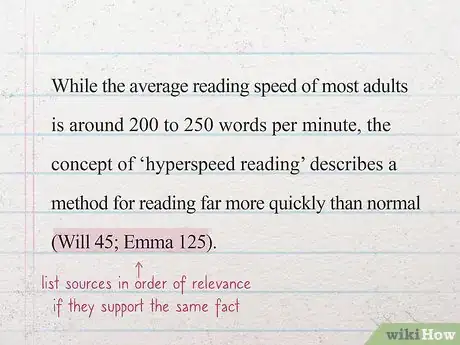
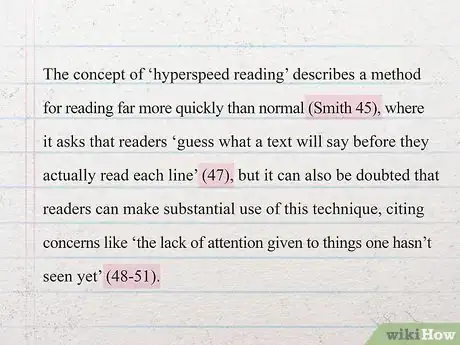
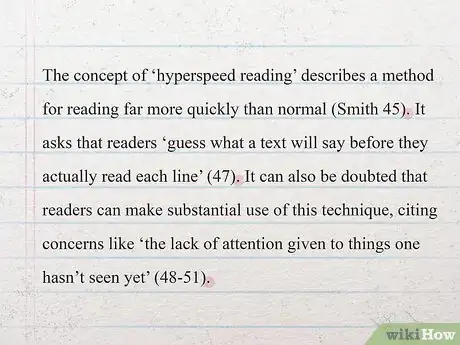
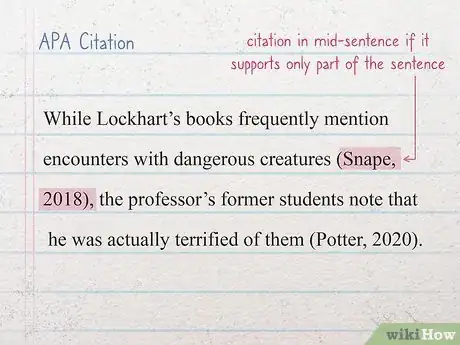
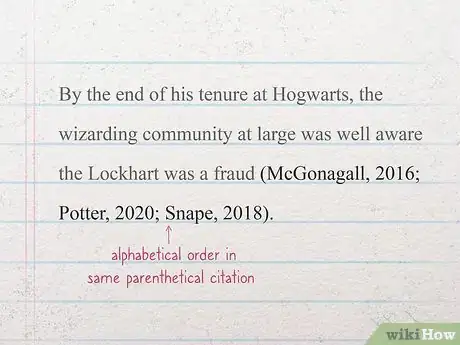
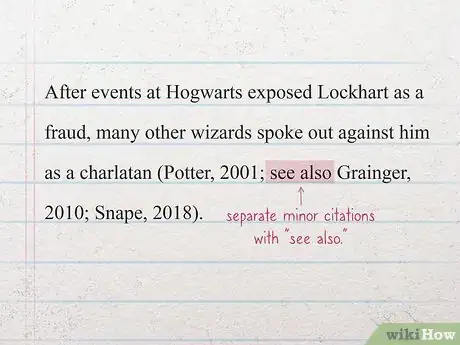
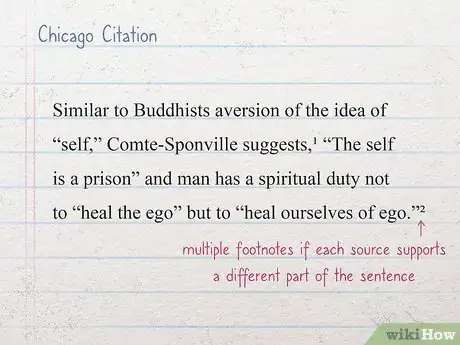
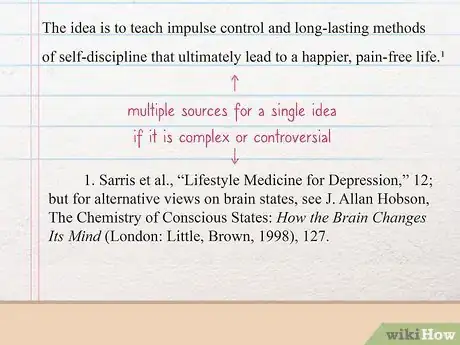
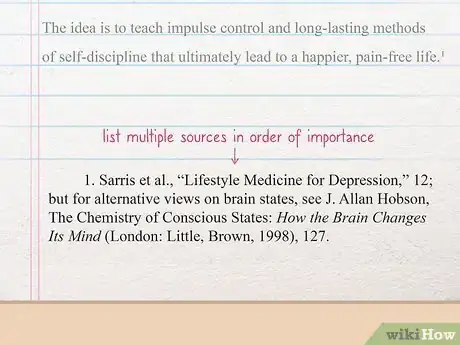
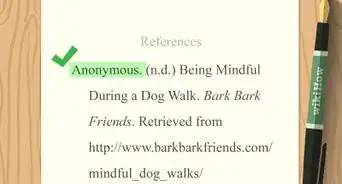

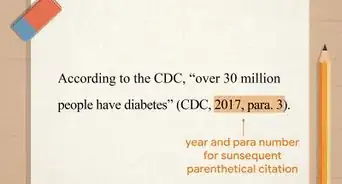

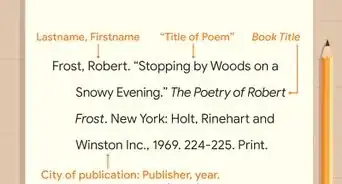





-Step-18.webp)
